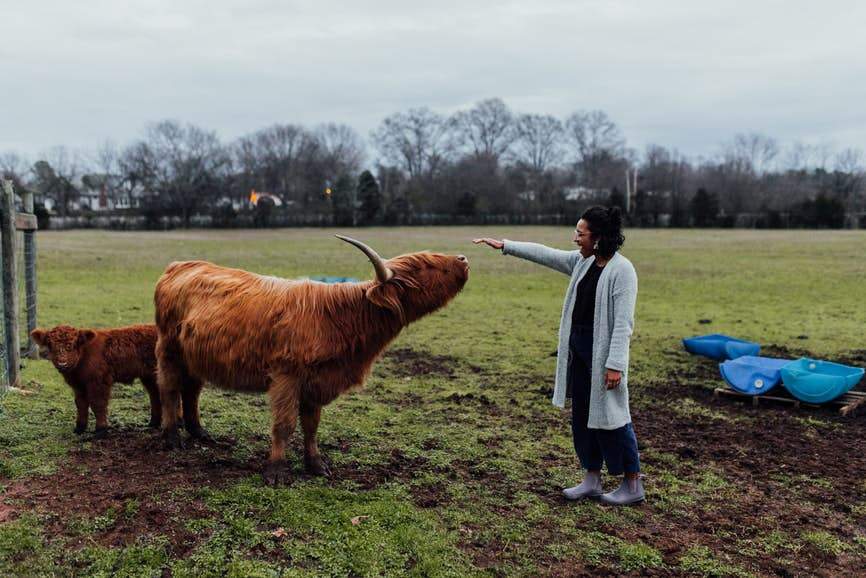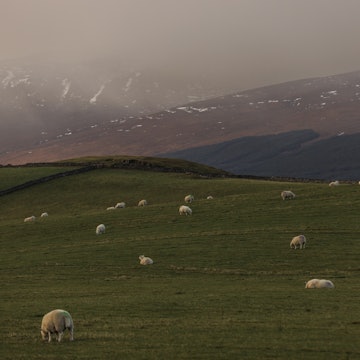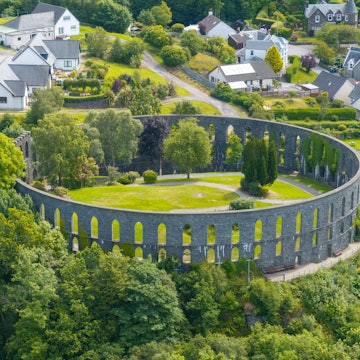
8 unforgettable wildlife experiences in the Scottish Highlands

May 26, 2025 • 11 min read
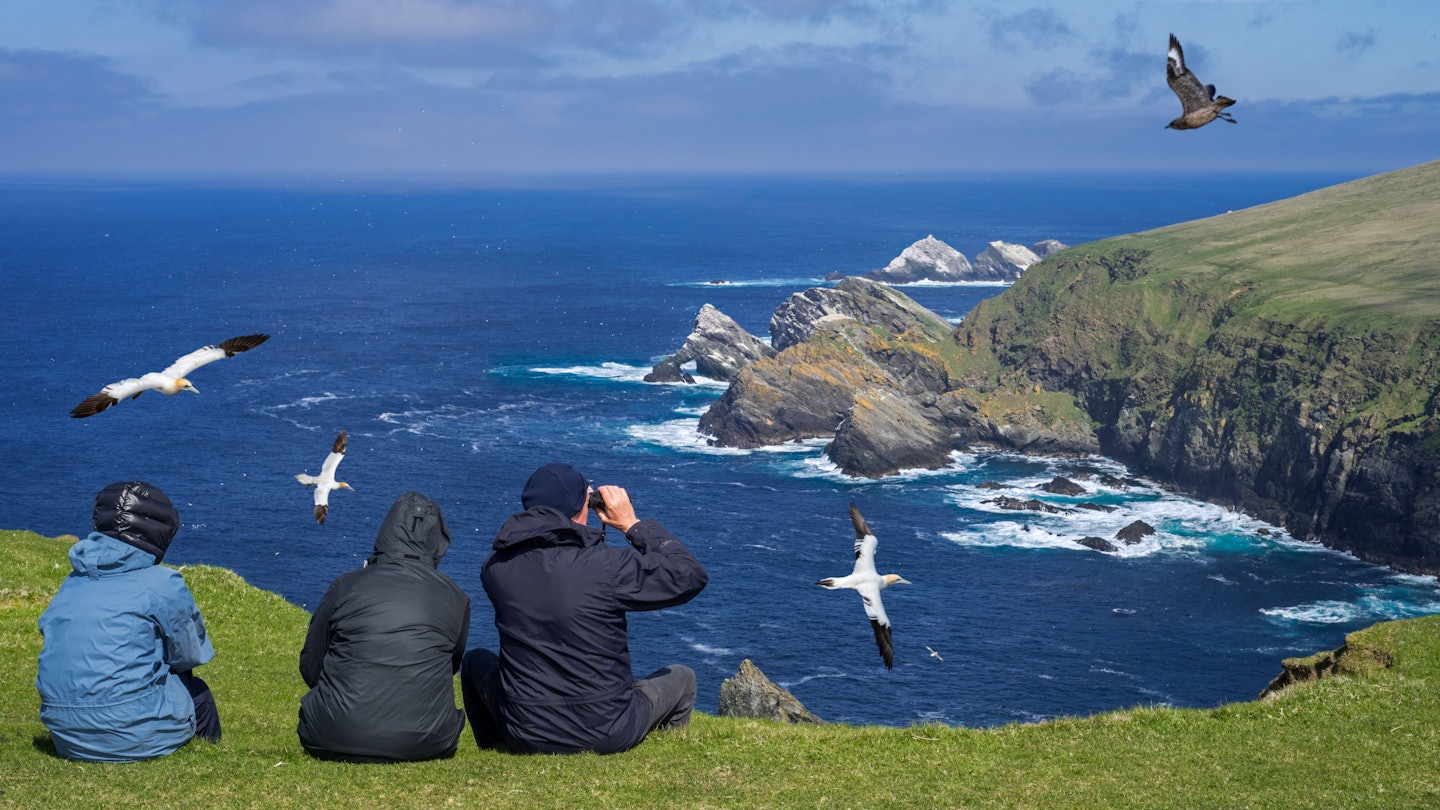
From whale watching to birding, Scotland's Highlands and Islands are alive with wildlife experiences. Philippe Clement/Shutterstock
The land, sea and sky of Scotland’s Scottish Highlands and Islands are home-sweet-home to an abundance of wonderful wildlife species, from native birds and the Highlands’ famous red deer to legions of nesting seabirds and migrating dolphins and whales that visit these shores every year. The best wildlife-watching experiences in Scotland's Highlands and Islands are a reason to visit all by themselves.
You can quietly observe and photograph the feathered, furry, finned and scaled inhabitants of this rugged corner of Scotland while wandering secluded shorelines on foot, from out on the water on boat and kayak tours, from lofty lookouts on remote islands, and even from your car as you drive from loch to glen.
So grab your binoculars (or your long camera lens) and plan an itinerary around these thrilling wildlife-watching experiences in Scotland’s Highlands and Islands.
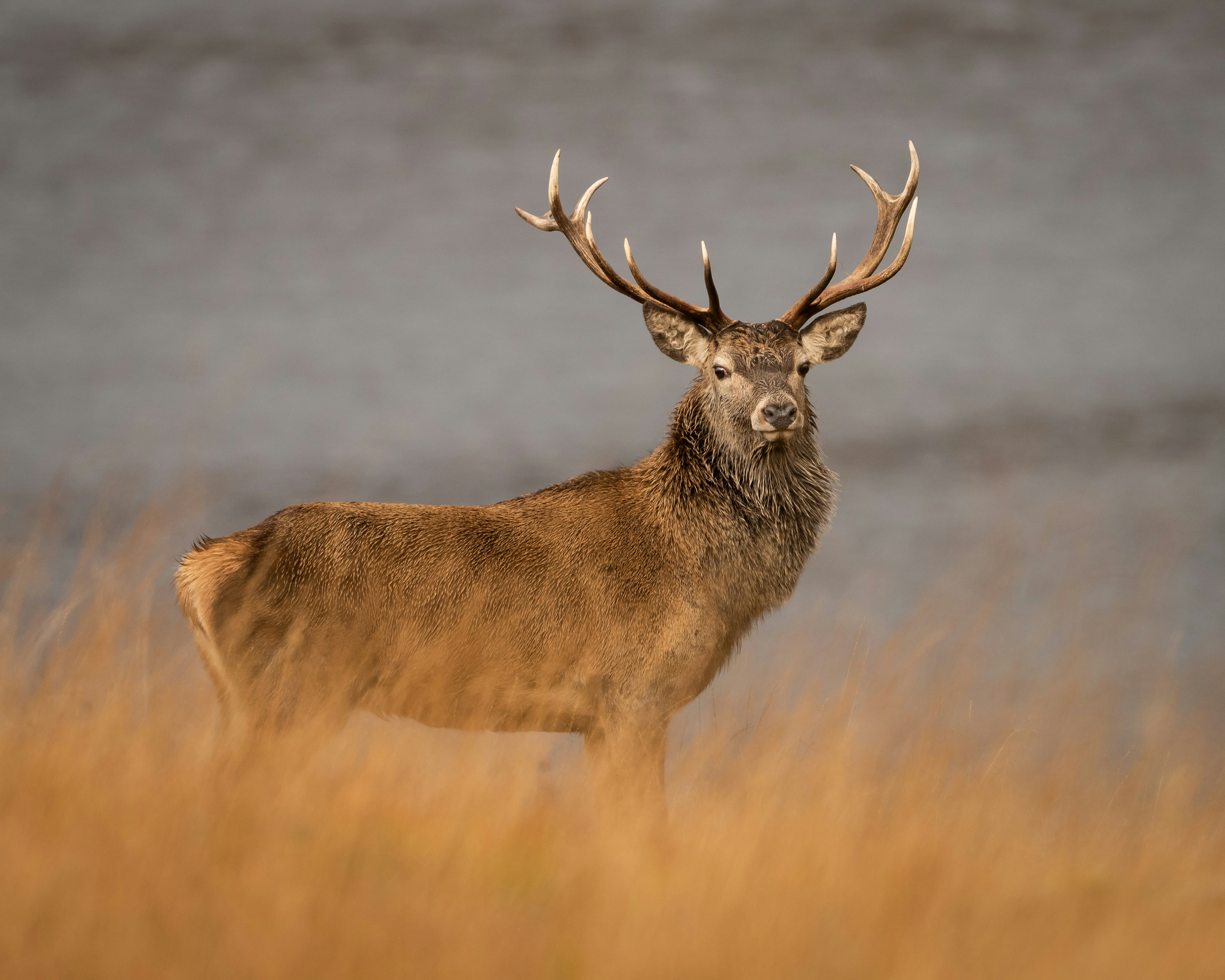
When should I go wildlife watching in Scotland’s Highlands and Islands?
Timing is key to maximising your chances of wildlife sightings. When working out the best time to visit, consider wildlife migration and breeding patterns – spring (March to May) and fall (September to November) are the top times to spot migrating birds, while the season for whale and dolphin watching runs from May to September and the rutting season for red deer is from September to November.
Seals, meanwhile, can be spotted along the shoreline year-round. If you’re here for the birds, do some research into the breeding season for the species you’re keen to spot – puffins, for example, gather to breed in the biggest numbers from May to July.
How do I see the wildlife in Scotland’s Highlands and Islands?
Birds can be spotted while walking and driving all over the Highlands and Islands, but some of the most impressive breeding colonies can be found at RSPB reserves such as Dunnet Head and other protected areas like Hermaness National Nature Reserve in the Shetland Islands, where you’ll find facilities for birders. Some of the best seabird reserves are only accessible on boat trips.
Red deer can be seen roaming across higher ground on the mainland in locations such as Cairngorms National Park and Glencoe, and on the islands of Jura and Skye. The top spot to see dolphins is the Moray Firth near Inverness. For whales, it’s the Sea of the Hebrides; cetacean-spotting boat trips leave from small ports all along the west coast.
You can also take boat trips to view important seal colonies such as those in the Treshnish Isles near Iona. However, seals can be seen all around the coast, including on beaches and skerries (rocky reefs) across the Outer Hebrides, Orkney Islands and Shetland Islands.

1. Spot seals and puffins on Staffa
Best for encounters with puffins
For an introduction to some of Scotland’s most characterful critters, get up close to adorable, comical, orange-beaked puffins and lolling grey seals on a boat trip from Iona or Mull to spectacular Staffa and the Treshnish Isles.
As well as the hexagonal basalt columns of stunning Fingal’s Cave, Staffa is home to mobs of puffins in the breeding season, which runs from April to July, with some puffins lingering till August. The island's grey seals are joined by larger Atlantic seals in September and October.
Book a boat trip with Staffa Tours or Staffa Trips, departing daily from Iona and Fionnphort on Mull during the season, to enjoy an hour ashore on Staffa. Use the time wisely – head straight for Fingal’s Cave and step inside the echoey chamber to feel the force of the sea surging against the unique rock formations, then quickly tread the coastal trail to the dizzying cliffs above Goat Cave for puffins aplenty.
From April to August, Staffa Tours offers a six-hour tour that also includes shore time on the Isle of Lunga, where the puffin party continues on an even bigger scale.
Planning tip: Other puffin hotspots include Sumburgh Head in Shetland, Dunnet Head on the north coast of the mainland, and the remote island St Kilda (accessible from Leverburgh on the Isle of Harris).
2. See magnificent red deer on the Isle of Jura
Best for meeting the real-life monarch of the glens
For a Scottish wildlife encounter that you may have seen pictured on the labels of bottles of Scotch whisky, look out for majestic stags on the Isle of Jura, west of Glasgow. Civilization grasps on to just one edge of Jura’s landscape, and the rest is claimed by nature, with areas of untouched wilderness, dominating mountains, inaccessible sections of coastline, and a population of red deer that vastly outnumbers the island’s human population.
The island is home to no less than 4000 red deer, six pairs of sea eagles, and a pair of otters for every three miles of coastline, so the odds of spotting wildlife are highly in your favor. You can see red deer on higher ground away from human habitation all over Jura, particularly during the fall rutting season (September to early November) when stags with huge branching antlers can be heard roaring their dominance across the moors.
Planning tip: A guided walk with Jura Guided up the three imposing peaks known as the Paps of Jura is a good way to maximize your chances of wildlife sightings. After a morning searching the exposed hills for red deer, take a tour of the Isle of Jura Distillery or the Deer Island Distillery for a warming dram.

3. Scan the coast for sea eagles on the Island of Mull
Best for fans of big birds
Even casual birders will be thrilled by the sight of sea eagles soaring overhead and swooping down to grab fish from the water – it's what everyone is hoping to see on a wildlife cruise on the Isle of Mull. Operating from the Ulva ferry landing on the island's west coast, cruises with Mull Charters have a good track record for spotting white-tailed sea eagles hunting along Mull’s indented coastline.
On land, you have a chance of seeing both white-tailed sea eagles and golden eagles, as well as otters and other wildlife. Mull Wildlife Tours can get you into a prime location for spotting Mull’s feathered and furry inhabitants. Even while driving, keep your eyes open – otters and eagles are often spotted from the B8073 and B8035 on the shores of Loch Na Keal on the wild west coast of Mull.
Planning tip: If it’s golden eagles you’re after, try the Cairngorms or the North Harris Eagle Observatory on the Isle of Harris – a remote lookout in Gleann Mhiabhaig.
4. Look for Scottish wildcats and red squirrels in the Cairngorms
Best for encounters with rare wildlife
The high hills of Cairngorms National Park are home to many of the Highlands’ most iconic wildlife species, including golden and sea eagles, red deer, pine martens, rare Scottish wildcats and red squirrels – a species driven to the brink in many parts of the UK by the imported American grey squirrel.
To see shy but charming red squirrels, head to the shores of Glen Affric, Loch Garten or the Abernethy Forest National Nature Reserve. There is evidence that the population of red squirrels is growing and pushing back invasive grey squirrels at the edge of the reserve. A key predator of squirrels is the pine marten, which you may be able to spy from the hides at the Rothiemurchus Estate (rare capercaillies are also seen here).
Habitat loss and interbreeding with feral domestic cats have made the Scottish wildcat Britain’s most endangered mammal. Fewer than 400 purebred individuals survive, so seeing one in the wild is extremely rare, but you never know. As a fallback, you can see wildcats in captivity at the Highland Wildlife Park in Kincraig.

5. Watch dolphins gamboling in the Moray Firth
Best marine mammal experience
Cutting southwest from the North Sea towards Inverness, the Moray Firth is a favored haunt of the bottlenose dolphin. Around 200 of these playful cetaceans frolic in the waters here – the most northerly population of bottlenose dolphins in the world. See them from April to August on boat trips from Inverness with Dolphin Spirit; there’s a chance of seeing porpoises, seals and myriad seabirds too.
There’s no need to go out on the water. Dolphins are often spotted from the battlements of Fort George – established in 1748 in the aftermath of the Battle of Culloden, as a base for King George II’s army of occupation in the Highlands. The half-mile walk around the ramparts offers fine views across to Chanonry Point – one of the favorite hangouts of the Firth’s resident dolphins.
You also have a good chance of sightings from Chanonry Point across the bay, at the tip of a sandy spur running out to the Chanonry Lighthouse near Fortrose. Other spots to try your luck include Kessock Bridge on the outskirts of Inverness and the Scottish Dolphin Centre on Spey Bay.
Planning tip: Dolphins are most active in the hour after low tide, when they hunt the waters of the Firth for salmon and sea trout.
6. See a seabird metropolis on Handa Island
Best for birders
Scotland’s Highlands and Islands are famed for their seabird colonies – vast congregations of migratory visitors such as puffins, kittiwakes, terns and great skuas, that transform sea cliffs and craggy islands into bustling, squawking seabird cities.
Birding tours to breeding colonies run from spring to fall, slowing down as migrant species leave in the winter. One of the liveliest colonies is at Handa Island Wildlife Reserve off the coast of Sutherland, where upwards of 100,000 seabirds throng the cliffs.
To get here, catch the Handa Island Ferry from Tarbet near Scourie to start a looping walk around the island. The north coast is where you’ll find the island’s 100m-high (328ft) sea cliffs, alive with guillemots, great skuas, razorbills, fulmars and kittiwakes, plus puffins in May and June.

7. Search for seals on the Scottish Islands
Best easy wildlife encounter
Wildlife tours will get you close to wildlife, but there’s an exhilarating sense of wonder that comes from stumbling across Scotland’s captivating creatures under your own steam. While exploring the beaches and bays of the Outer Hebrides and the Orkney and Shetland Islands, chance encounters with seals are commonplace.
In the Outer Hebrides, harbor and grey seals can easily be spotted hauled out on the beaches and skerries of Berneray and North and South Uist. Other good places to try include Loch Finsbay and the western beaches of the Isle of Harris, and Stornoway Harbour and the bays fringing the western shores of the Isle of Lewis.
In Orkney, the RSPB reserve at Noup Head on Westray boasts spectacular stratified sea cliffs that attract vast numbers of breeding seabirds (including puffins) from April to July, plus plentiful seals, which haul out on the sloping skerries to the north of the headland.
Other favored seal hangouts on Orkney include Burwick and Windwick on South Ronaldsay and St Mary’s and Loch of Stenness on Mainland. In Shetland, seals are often seen in Lerwick Harbour, at Sumburgh Head and on Rerwick Beach north of Scousburgh.
Detour: Closer to the mainland, the island of Rona off Skye is home to one of the largest grey seal colonies in Britain. Spot them on a boat trip from Portree with Seaflower Skye or a sea kayaking trip from Broadford with Sea to Skye Xperience. For land-based sightings, explore the coastline at Neist Point, or the shores of Loch Pooltiel.
8. Get close to Scotland’s whales
Best marine wildlife adventure
While they can be elusive, multiple species of whales frequent the coast of the Scottish Highlands and Islands, from pilot and minke whales in deeper waters to playful harbor porpoises, which gather in the island-dotted Sea of the Hebrides. Even orcas make passing visits to the west coast and the bays of Orkney and Shetland.
A boat tour is the best way to spot whales. Cromarty-based EcoVentures clocks up regular whale sightings on its dolphin cruises on the Moray Firth, while Tobermory-based Sea Life Mull is the longest-established whale-watching company in the UK. Operating from Gairloch on the mainland north of Skye, Hebridean Whale Cruises runs cruises to spot harbor porpoises and minke whales in the waters of the North Minch.
For sightings from land, the Tiumpan Head Lighthouse on the Isle of Lewis, Sumburgh Head in Shetland, and the foghorn platform of the Ardnamurchan Lighthouse near Fort William are good vantage points for spotting minke whales in summer.
Detour: The Sea of the Hebrides is one of the few spots in the UK where you can see enormous, plankton-eating basking sharks. From May and October, keep your eyes peeled on boat trips between the Inner and Outer Hebrides, or join one of Basking Sharks Scotland’s shark-oriented spotting tours from their base at Oban on the mainland (May to September).
This article was adapted from Lonely Planet’s Scottish Highlands & Islands guidebook, published in June 2025.





